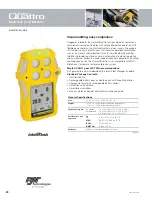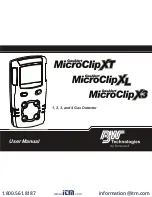
ENGLISH
Pag. 14
presence of some substances that, when present in the atmosphere being analysed,
can considerably change the response of the sensor and even damage it irremediably.
The presence of inhibitors or poisons is the most common cause of problems in the
gas detection and, for this reason, it is necessary to pay attention in order to avoid any
contamination. Among the most common poisons or inhibitors we can list silicones,
tetraethyl lead, sulphurous compounds (hydrogen sulphide), chlorinated compounds
(carbon tetrachloride), trichloroethylene and halogenated hydrocarbons.
3. Installation
It’s strictly recommended the use of personal protective equipment (PPE) during operations
inside the enclosure.
3.1 Correct mounting
The gas detector is always to be mounted with the sensing element placed downwards.
For no reasons at all the enclosure can be drilled.
Wall mount the detectors by employing the existing holes.
3.2 Main board layout
Figure 2) Detector circuit layout
WARNING!
JP9
JP1
JP7
JP3
JP15
JP14
JP5
JP8
JP2
Connection sensor 1
Terminal block connections
1
2
3
4
12-24 Vdc: V+
12-24 Vdc: V
-
RS485:
A
RS485: B
Connection sensor 2
Connection calibration keypad
JP8: setting baudrate RS485
Closed: 9600 bps
Open: 115200 bps
Red LED watch-dog monitor
ON: detector fault
Green LED detector activity
Red LED monitor RS485
ON: communication
JP14 and JP15: Settings of sensor 2
Do not modify the default settings
JP10
JP10: RS485 End line resistor (120 Ohm)
Closed: resistor inserted
Open: no resistor inserted
Содержание S2398CO
Страница 14: ...ENGLISH Pag 10...







































